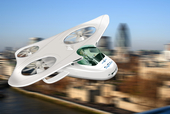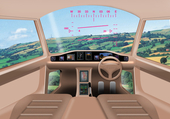EU Research Project
Scientific contact
Max Planck Institute for Biological Cybernetics
 heinrich.buelthoff[at]tuebingen.mpg.de
heinrich.buelthoff[at]tuebingen.mpg.de
Newsletters
 Newsletter #1, September 2011
Newsletter #1, September 2011
 Newsletter #2, March 2012
Newsletter #2, March 2012
 Newsletter #3, November 2012
Newsletter #3, November 2012
 Newsletter #4, August 2013
Newsletter #4, August 2013
 Newsletter #5, August 2014
Newsletter #5, August 2014
 Newsletter #6, March 2015
Newsletter #6, March 2015
Welcome
This project endet on December 31st, 2014.
Lifting personal transportation into the third dimension
Considering the prevailing congestion problems with ground-based transportation and the anticipated growth of traffic in the coming decades, a major challenge is to find solutions that combine the best of ground-based and air-based transportation. The optimal solution would consist in creating a personal air transport system (PATS) that can overcome the environmental and financial costs associated with all of our current methods of transport.
We propose an integrated approach to enable the first viable PATS based on Personal Aerial Vehicles (PAVs) envisioned for travelling between homes and working places, and for flying at low altitude in urban environments. Such PAVs should be fully or partially autonomous without requiring ground-based air traffic control. Furthermore, they should operate outside controlled airspace while current air traffic remains unchanged, and should later be integrated into the next generation of controlled airspace.
We propose an integrated approach to enable the first viable PATS based on Personal Aerial Vehicles (PAVs) envisioned for travelling between homes and working places, and for flying at low altitude in urban environments. Such PAVs should be fully or partially autonomous without requiring ground-based air traffic control. Furthermore, they should operate outside controlled airspace while current air traffic remains unchanged, and should later be integrated into the next generation of controlled airspace.
The myCopter project aims to pave the way for PAVs to be used by the general public within the context of such a transport system. The project consortium consists of experts that can make the technology advancements necessary for a viable PATS, and a partner to assess the impact of the envisioned PATS on society (socio-technological evaluation). To this end, test models of handling dynamics for potential PAVs will be designed and implemented on unmanned aerial vehicles, motion simulators, and a manned helicopter. In addition, an investigation into the human capability of flying a PAV will be conducted, resulting in a user-centred design of a suitable human-machine interface (HMI). Furthermore, the project will introduce new automation technologies for obstacle avoidance, path planning and formation flying, which also have excellent potential for other aerospace applications. This project is a unique integration of technological advancements and social investigations that are necessary to move public transportation into the third dimension.











